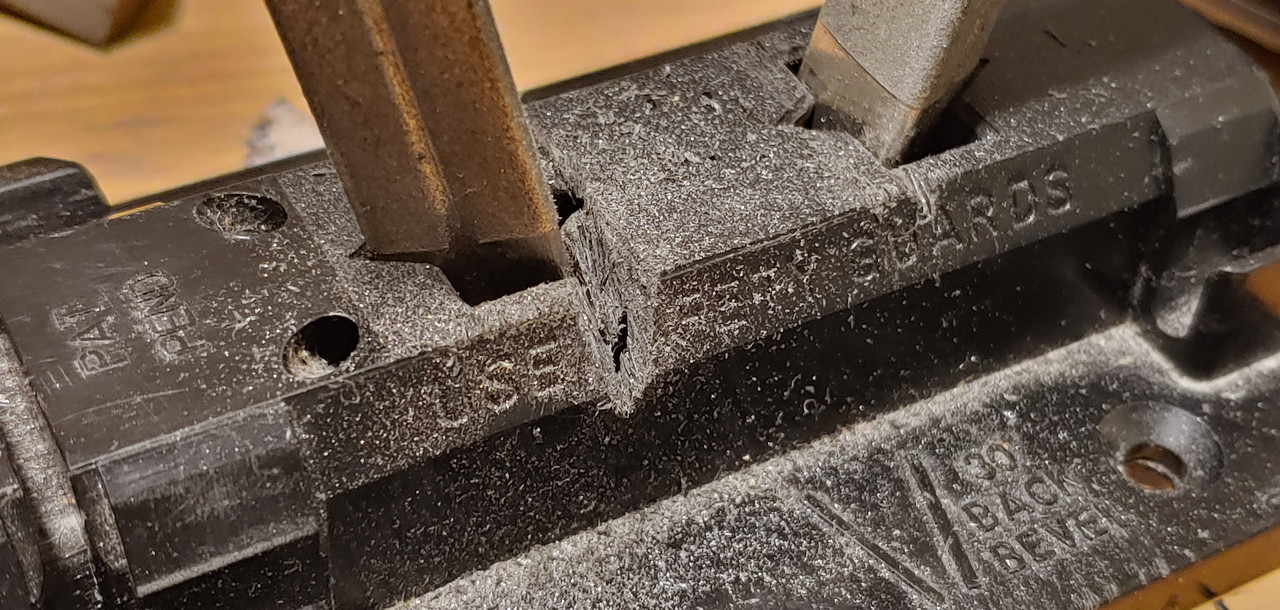
Reprofiled a PE and SE knife to 15dps tonight and cut through my sharpmaker base in the process. Time to order another :cool:

vivi wrote: ↑Thu Feb 18, 2021 11:42 pmhttps://i.postimg.cc/B6wnR5vX/20210219-013344-HDR.jpg
Reprofiled a PE and SE knife to 15dps tonight and cut through my sharpmaker base in the process. Time to order another :cool:
It takes me about half an hour to take a SE Pacific Salt H1 from 20 degrees to 15 degrees. That includes refining the edge after setting the bevel.MFlovejp wrote: ↑Thu Feb 18, 2021 11:52 pmvivi wrote: ↑Thu Feb 18, 2021 11:42 pmhttps://i.postimg.cc/B6wnR5vX/20210219-013344-HDR.jpg
Reprofiled a PE and SE knife to 15dps tonight and cut through my sharpmaker base in the process. Time to order another :cool:
Holy smokes! Well at least you used the heck out of it. How long would it take to reprofile say an H1 Pac Salt that way?
qwkzotc wrote: ↑Fri Feb 19, 2021 5:17 amI've not worn my Sharpmaker anywhere near that much (yet) but it does raise questions of how to fix and prevent.
First, I've worked a lot with broken, cut plastic in a past life and wonder if you could "fill" in the exposed area with a superglue, glue, reinforced fill or epoxy to build it back up, maybe in layers. It does not appear that the exposed area is "load bearing" or supporting the rods.
Second, I wonder if one could/should tape a nice thick cardboard slab at the areas that are being gouged. Would the tape or cardboard dull the new edge more so than the material of the Sharpmaker.
Third, I've been experimenting with mounting my Sharpmaker on a vertical surface. Hard to get used to but the blade falls free without hitting the table or Sharpmaker. Does anyone have any experience and recommendations for trying this?
Fourth, is the one side noticeably more damaged because you were doing a serrated knife? in other words, would a plain edge eventually dig into both sides? And, actually, would a plain edge dig in as much as the serrated edge?
Dan
Cambertree wrote: ↑Fri Feb 19, 2021 5:28 amWow Vivi, you weren’t enjoying some refreshing beverages at the time, by any chance, were you? :D :p :)
I like doing the first thinning out of a new knife edge, and I sometimes like to relax with a couple of beers while I’m doing it. But there’s definitely a point where I need to put away the sharpening gear.
Ask me how I know. :D :)
Cambertree wrote:
I like doing the first thinning out of a new knife edge, and I sometimes like to relax with a couple of beers while I’m doing it....
Wartstein wrote: ↑Fri Feb 19, 2021 5:32 amqwkzotc wrote: ↑Fri Feb 19, 2021 5:17 amI've not worn my Sharpmaker anywhere near that much (yet) but it does raise questions of how to fix and prevent.
First, I've worked a lot with broken, cut plastic in a past life and wonder if you could "fill" in the exposed area with a superglue, glue, reinforced fill or epoxy to build it back up, maybe in layers. It does not appear that the exposed area is "load bearing" or supporting the rods.
Second, I wonder if one could/should tape a nice thick cardboard slab at the areas that are being gouged. Would the tape or cardboard dull the new edge more so than the material of the Sharpmaker.
Third, I've been experimenting with mounting my Sharpmaker on a vertical surface. Hard to get used to but the blade falls free without hitting the table or Sharpmaker. Does anyone have any experience and recommendations for trying this?
Fourth, is the one side noticeably more damaged because you were doing a serrated knife? in other words, would a plain edge eventually dig into both sides? And, actually, would a plain edge dig in as much as the serrated edge?
Dan
interesting post! :)
From my experience:
- 1.) Yes, a serrated edge certainly digs in more than a plain edge! After all, this is actually one of the advantages of SE normally: Force concentrated on a much smaller (and "pointier") surface 2.) More acute edge due to the chisel grind
- 2.) Yes, when sharpening SE one does obviously more strokes on one (the beveled) side. With Vivis technique the other side does no touch the base ever, as far as I recall his vid on sharpening SE.
Interesting idea to mount the Sharpmaker on a vertical surface: But why exactly? Do you feel that you can see the right angle better by that?
In my experience gravity helps in feeling how light or hard the strokes are one does. (So for example for light strokes almost only let "gravity" do the work). And this is only possible when the Sharpmaker sits on a horizontal surface if course - ?
Haha I was thinking the same :)
Finally a SM base that looks worse than mine!